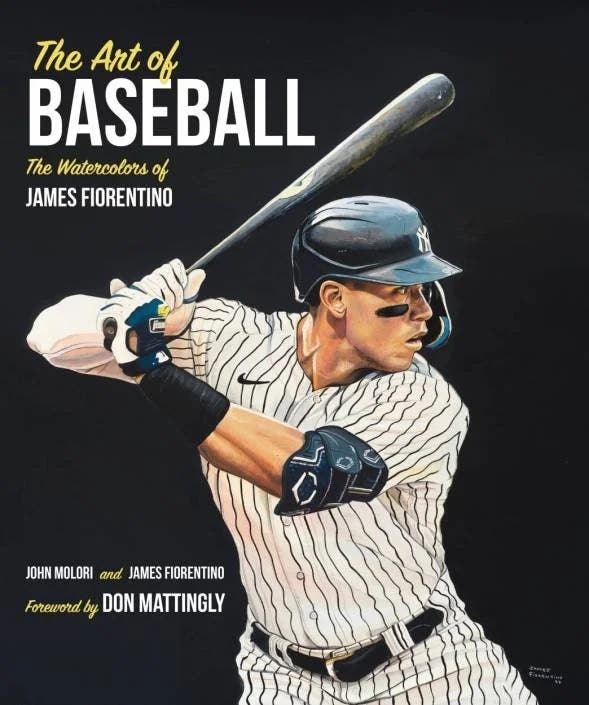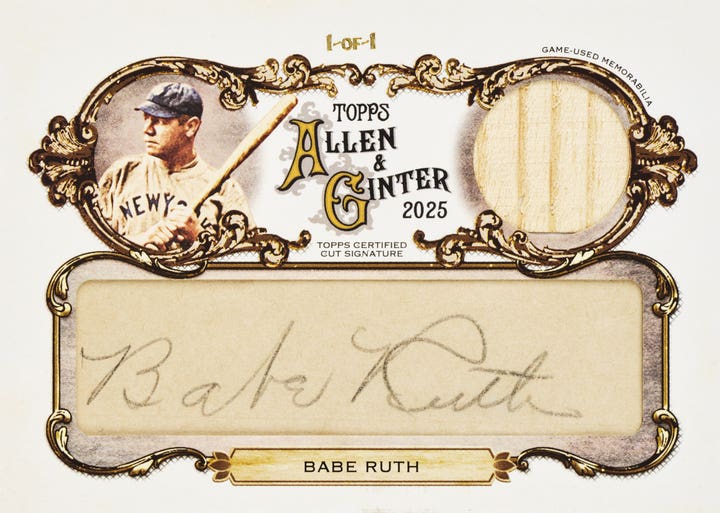News
1971 Topps baseball set included action shots normally not seen in a card set
By John McMurray
The 1971 Topps baseball set ushered in the modern era of baseball cards.
In contrast to cards with white borders, which had characterized most baseball card sets up to that point, Topps’ black-bordered cards represented its boldest look ever in a regular-issue set. Whereas the 1970 Topps baseball set was made up of an array of portraits and posed shots which had become typical of Topps issues, the 1971 set included more color, a wider range of poses, and placed an emphasis on game action shots, all features which laid the groundwork for what baseball cards look like today.
It is these game action shots that are most memorable. With a few exceptions, such as the 1956 Topps set, which included illustrations of player action in the background, so-called action photos on regular-issue Topps baseball cards were almost always posed pictures of players swinging or pitchers following through with their windups, with similar poses being repeated annually.
In 1971, in contrast, Topps extensively used game action photos on its regular issue cards for the first time (having previously made use of game action photos in other contexts, such as on World Series cards), and many of these cards offer some of the best action shots of the decade. It is surprising, but accurate, to say that these action cards in the 1971 Topps baseball set show far more action than the “In Action” cards that Topps released in years to follow.
In its 752-card set — the largest Topps had released to that point — 52 cards offer game action photos (not counting the 14 action shots from its post-season cards that year, a subset which had included game action photos for years). The majority of cards in the 1971 set, including Johnny Bench holding a bat on his shoulder, Steve Garvey with his hands on his knees, or Leo Durocher’s portrait, were in Topps’ traditional posed styles. Still, Topps’ experimentation with wider camera angles in 1971 as well as the inclusion of multiple players on a single regular card were significant departures from the cards Topps had issued only a year before.
Action photos in the context of this article refer to photos that show actual game action, regardless of how dynamic the photos themselves may or may not be. Action photos that were not from games, such as Bob Didier moving to catch a pop up or Al Kaline swinging a bat, are therefore not included. Here, arranged by category and in order of their distinctiveness, are the types of game action cards from the 1971 Topps baseball set:
Plays at the plate (2)
#5 Thurman Munson and #275 Vada Pinson
No doubt the most famous game action shot in the 1971 Topps set, the Munson card is the one most in-demand from Topps’ 1971 issue. This card is outstanding in every respect, making superb use of the horizontal format to show Munson’s determination behind the plate. The Topps 1970 All-Star Rookie trophy and Munson’s symmetrical facsimile signature across the front only add to the superior presentation. Especially because it is Munson’s first appearance on his own card, this card surely will remain a classic, particularly with the well-known challenges of finding it (or any 1971 Topps baseball card) in top condition due to the fragile black borders.
The Pinson card, where the Cleveland outfielder is shown having just slid into home plate, also features Munson in the background (Munson’s uniform number 15 is clearly visible). It is not obvious from the card itself whether Pinson is safe or out since the ball cannot be seen. Both of these cards include a noticeable cloud of dirt, enhancing each significantly.
Horizontal batting poses (4)
#131 Curt Blefary, #360 Jim Fregosi, #395 Roy White, and #514 Ron Woods
These cards are perhaps the most underrated ones in the 1971 Topps set. Simply, no other cards issued during the 1970s show a view of an at-bat so well. The White and Woods cards are almost exactly the same pose, clearly taken during the same game, but the Woods card is the only one of the two to show the umpire. Blefary following through with a swing and Fregosi apparently connecting with a pitch are stellar examples of baseball action cards, and it is difficult to think of any baseball cards before or since which closely resemble these two. As a group, the horizontal batting poses in the 1971 Topps baseball set are magnificently done.
Vertical batting poses (22)
#18 Norm Miller, #23 Oscar Gamble, #35 Lou Piniella, #78 Jim Spencer, #103 Rich Severson, #264 Joe Morgan, #299 Ed Kirkpatrick, #300 Brooks Robinson, #337 Jesus Alou, #349 Rich Reese, #358 Danny Cater, #370 Joe Torre, #382 Jake Gibbs, #411 George Spriggs, #445 Art Shamsky, #468 Frank Fernandez, #470 Bob Oliver, #483 Gene Michael, #487 Paul Schaal, #495 Felipe Alou, #501 Andy Etchebarren, and #508 Roger Repoz
Most vertical batting poses in this set are images of players at bat taken from the side, an approach Topps would use in other card sets during the 1970s. It is worthwhile to note that the Shamsky and Morgan cards are genuinely different, each showing an at-bat from over the catcher’s left shoulder.
Even though its image could be more tightly focused, the Shamsky card is especially good as an action photo, as Shamsky leans away from an inside pitch right as the ball crosses the plate, an example of Topps’ photographic creativity. At the same time, even with the batter, catcher, and umpire being pictured, it is not possible to see any of their faces on the cards of either Shamsky or Morgan — an unusual approach that Topps surely did not want to use too frequently. Also, while it is easy to infer that Shamsky and Morgan are the players batting on each of these cards, their respective cards are representative of a problem which plagued several 1970s Topps cards, where the player being portrayed was not always easy to identify.
Also, although it is less distinctive than the others, Joe Torre’s card is the most memorable action pose of his career and stands out even more so because it was issued during his MVP season.
Middle infield plays (5)
#118 Cookie Rojas, #310 Tommie Agee, #355 Bud Harrelson, #476 Dal Maxvill, and #492 Ken Boswell
The best of these cards, all of which show plays at second base, is that of Cookie Rojas, pictured leaping as he makes a throw to first base in an effort to complete a double play. The close framing of this card combined with the picture of Rojas in mid-leap as a runner slides makes for an excellent action shot. This card also offers another example of the facsimile signature serving as an unobtrusive benefit to the overall display. Still, the nearly empty stands in the background of this card are somewhat distracting. The Maxvill and Boswell cards each employ a similar pose, but neither is as closely-focused and, therefore, each is a step down from the Rojas card.
Topps relied on context with the Agee and Harrelson cards, assuming that collectors would be able to pick the featured player out from the crowd. On their respective cards, perhaps it is obvious that Agee is the player sliding into second base or that Harrelson is the one applying the tag. Since the Agee card contains pictures of three players and the Harrelson card shows four players (one of them being Nolan Ryan with his back turned), however, it is reasonable to expect that at least some collectors may have been confused. If the Agee card captures the moment slightly after the play has concluded, the Harrelson card manages to capture exactly when the tag is applied, a rare sight on a contemporary baseball card.
Pitching poses (11)
#82 Casey Cox, #303 Lindy McDaniel, #318 Rudy May, #406 Ray Sadecki, #428 Jim McAndrew, #450 Bob Gibson, #454 Mike Paul, #460 Fritz Peterson, #511 Chris Short, #520 Nolan Ryan, and #520 Tommy John
Two of the pitching action photos in the set taken during games do not show much actual action at all: Lindy McDaniel is staring at the catcher’s signs while holding the ball and Bob Gibson is getting ready to begin his windup. The rest, though, are generally well-done examples of pitchers throwing with gusto, with Jim McAndrew’s card being perhaps the most robust. On the one hand, the Cox, Paul, and John cards show more routine poses, while, on the other hand, the horizontal Rudy May card offers a different and very effective presentation, as May is about to deliver a pitch against a backdrop of fans in attendance.
Unusual photographic angles make several of these pitching cards stand out. Sadecki is shown almost from the umpire’s perspective, a straight-on shot which obscures Sadecki slightly but which is also unique in the set. Peterson, portrayed in mid-delivery, is pictured from an unusual angle, from somewhere between third base and home plate. Short’s card is taken from a similar position on the other side of the field and captures the ball in flight. While none of these cards has a top-level presentation, they together provide the set with a sense of variety, which was a change in and of itself.
Nolan Ryan’s card, even if it shows a more typical pose, captures the fireballing right-hander about to deliver a pitch. Its simple, clean composition justifiably makes it one of the most famous cards of one of the game’s elite players.
General fielding poses (3)
#324 Graig Nettles, #485 Ken McMullen, #490 Deron Johnson
The most memorable fielding action shot in the 1971 Topps baseball set is, of course, the World Series card of Brooks Robinson diving at third base during Game 5 of the 1970 World Series (#331 B. Robinson Commits Robbery!) Outside of that card, the fielding poses in this set are pedestrian. Nettles and McMullen, both third basemen, are shown ready to field a batted ball, while Johnson is doing the same at first base. The set does not make much use of fielding action shots, which seems to have been a missed opportunity.
Other poses (5)
#40 Lee May, #373 Tom McCraw, and #407 Joe Rudi (holding the runner at first); #278 Jerry Grote (running to first base); and #393 Merv Rettenmund (standing on base)
While it is obvious that a card of a first baseman holding a runner on first base would not be filled with action, Topps did make the most of the three game action shots it used of these poses in 1971. In particular, the May and McCraw cards contain colorful, well-framed images using an angle that had never been used in a card set to date.
Jerry Grote’s card is the only one in the set that shows a player running the bases, but what the image gains in intensity, it loses because Grote’s head his down and his face is not visible.
Rettenmund standing on a base also does not offer much in the way of action, though it offers another new perspective. These non-traditional poses, even if they are of varying quality, were each different and innovative, demonstrating Topps’ desire to try a new approach in 1971.
Even though it may appear that the 1971 Topps baseball set contains a superabundance of game action cards, the 52 action cards out of the 738 total cards (excepting, as above, the 14 post-season cards) represent only about seven percent of the set. While the set is made up of seven series, Topps also did not include any game action cards after the fifth series. The last game action card in the set is #520 (Tommy John), and, as the sixth series begins with card #524, there are no game action photos in the last 232 cards of the set.
If one was to make a list of the highest quality and most memorable action cards in Topps’ regular issue baseball card sets, it is hard to imagine not starting with the 1971 Topps set. Many of the action poses in the set remain the gold standard and surely served as the inspiration for action cards to come.
Along with the 1953 Bowman Color Pee Wee Reese, the 1971 Topps Munson card ranks with the very best action cards ever produced. While, for some, the black borders of the 1971 Topps baseball set may be an acquired taste, there should be no doubt that the action poses in this set were innovative and groundbreaking. Those are distinctions which few other baseball card sets can match. u
John McMurray focuses on vintage cards for SCD. He can be reached at jmcmurray04@yahoo.com.








